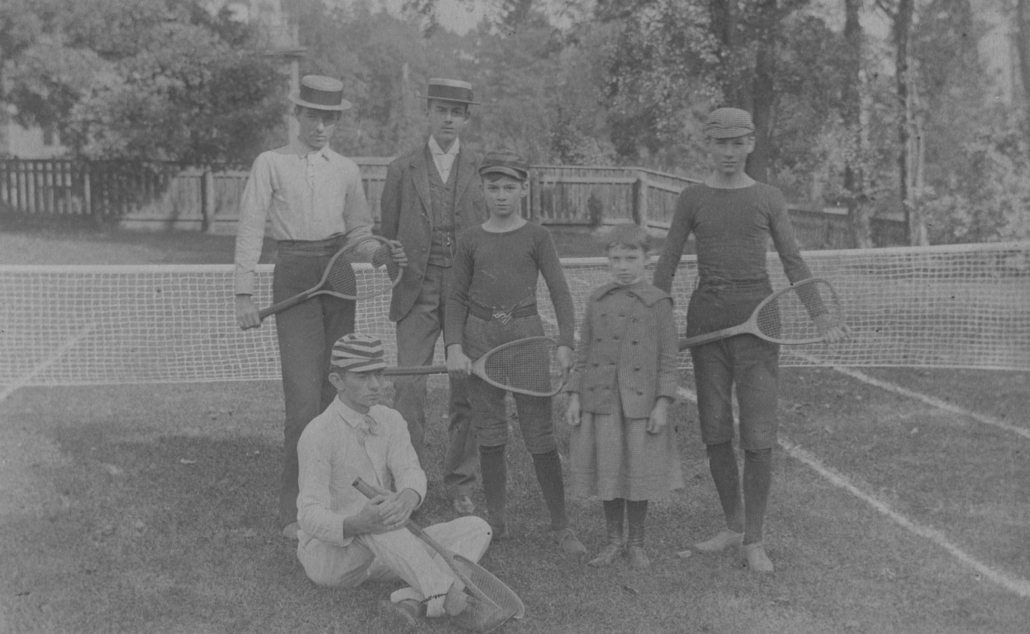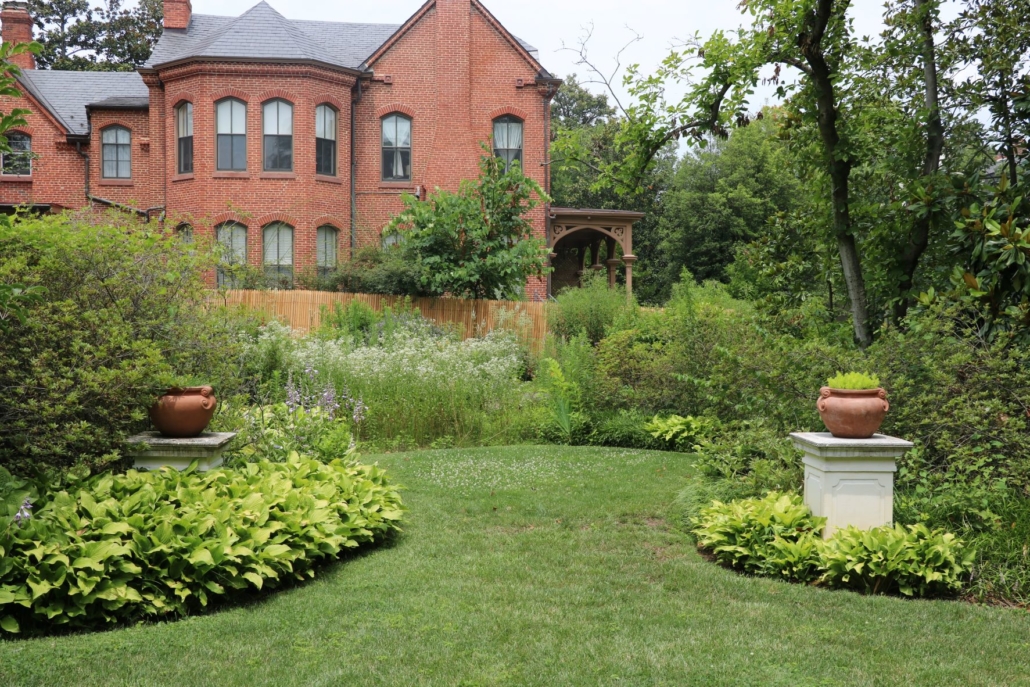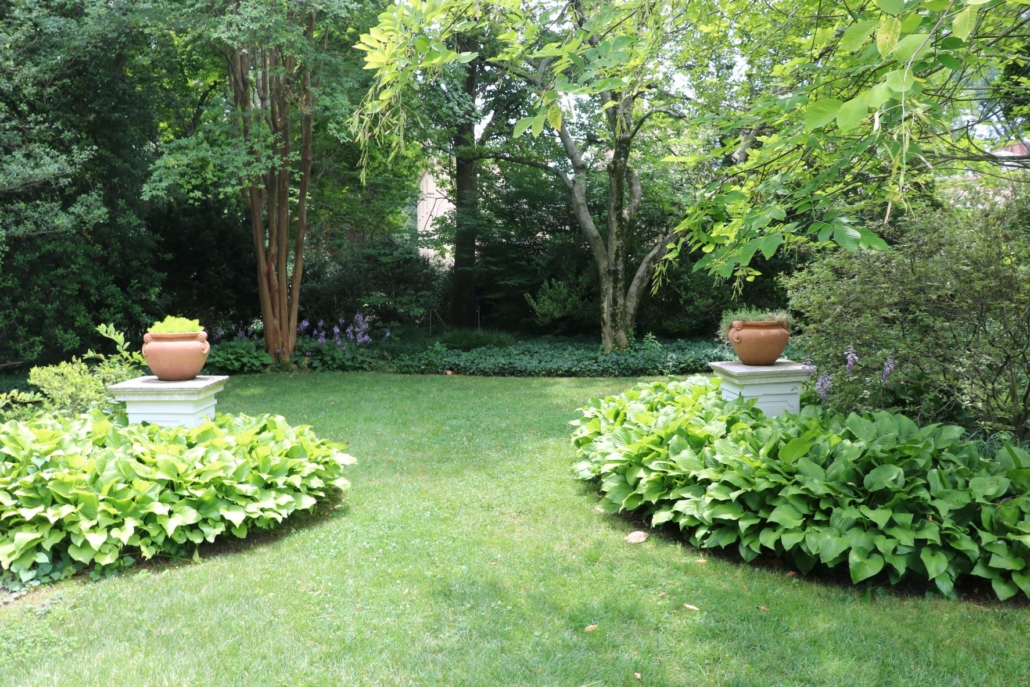Tudor Place Recognized with National Award for Preservation and Collections Care
FOR IMMEDIATE RELEASE |
CONTACT |
| May 21, 2014 | Communications Officer Mandy Katz |
| 202.486.7645 | mkatz@tudorplace.org |
The Tudor Place Foundation has been honored with the 2014 Ross Merrill Award for Outstanding Commitment to the Preservation and Care of Collections at Tudor Place Historic House & Garden. The award, established in 1999, is presented jointly by Heritage Preservation and the American Institute for Conservation of Historic and Artistic Works (AIC). Recipients are selected by a panel of distinguished preservation and conservation experts from across the nation.
Curator Erin Kuykendall and specialist Mark Adler preserved and made minor repairs to an 1804 Broadwood & Son pianoforte.
The Ross Merrill award recognizes the systematic and strategic work of Tudor Place over the years to preserve and care for all its historic and cultural assets belonging to the National Historic Landmark. Since it assumed ownership of Tudor Place in 1984 from its last private owner, the Foundation has committed itself to inventorying, cataloguing, assessing, and conserving its historic and cultural assets – the buildings, object collection, archive, book collection, and landscape – and expanded its collections staff from one person to three. In recent years, significant effort has enabled a comprehensive Master Preservation Plan that will permit the public’s engagement with the museum’s assets while also protecting them.

Conservator Greg Byrne and Erin Kuykendall compare X-radiographs and a wax figure from a tableau created for Martha Washington. Additional funding is sought to complete this significant project.
“It is an honor to see the often quiet work of many years recognized with this highly coveted award,” Executive Director Leslie Buhler said. “Heritage Preservation and the AIC are internationally renowned for their work to preserve our country’s cultural resources. We are gratified to see Tudor Place recognized for its contributions toward that goal.”
Tudor Place has clearly demonstrated its commitment to protecting, preserving, maintaining, and interpreting its historic property and collections. Beginning in 1990 with a Conservation Assessment Program grant, the museum has methodically assessed its holdings. From 2004 to 2011 alone, the organization solicited the help of more than a dozen conservation professionals to assess the condition of its collections. In addition, staff are tasked with conducting a detailed condition assessment of every object on display annually.
The museum’s dedication to better understanding its collections has allowed it to identify deliberate short and long-range conservation goals and priorities. This attentiveness has also served as the impetus for the museum’s comprehensive polices and plans throughout the years from the implementation of an integrated pest management plan in 1996 to improved environmental monitoring in 2007. In fact, in 2008 Tudor Place created a Master Preservation Plan that outlines clear goals for the site and primacy on preservation best practices.
Jennifer A. Zemanek, a textile conservator who worked with Tudor Place on conserving a 1783 shell and waxwork tableau, commended the board’s and staff’s “…enthusiasm, patience and diligence in tackling this very complex conservation project, ultimately making decisions that exemplify Tudor Place’s absolute dedication to the preservation and conservation of its collections.”
The award committee was also impressed by the museum’s conservation-focused outreach activities both for its own staff and the general public. Tudor Place’s collections team—which has grown from one staff member to three since 2000—works collaboratively with all departments to inform staff of preventive steps they can take to ensure events, tours, and educational programs do not harm the grounds, house, or collections. Through newsletters, public reports, and programs, the general public is also informed of the museum’s conservation efforts.
“The Museum’s sustained commitment to issues of preservation is truly impressive,” said Lawrence L. Reger, Heritage Preservation president. “I, along with AIC, applaud the Tudor Place for its achievements and commend both its board and staff for their tireless efforts.”
The Ross Merrill Award for Outstanding Commitment to the Preservation and Care of Collections will be presented during a ceremony at Tudor Place Historic House and Garden on Wednesday, June 18.
The Award
The Ross Merrill Award for Outstanding Commitment to the Preservation and Care of Collections has been presented on an annual basis since 1999. Previous recipients include nationally prominent organizations such as Colonial Williamsburg and the Museum of Fine Arts, Boston, and smaller institutions such as the Historical Society of Frederick Country (Maryland) and Maymont Foundation (Richmond, Virginia). In 2012, the Alaska State Museum and the Harness Racing Museum and Hall of Fame received the award. The Indianapolis Museum of Art was also a recipient of the 2013 award.
About AIC
The American Institute for Conservation of Historic and Artistic Works is the national membership organization of conservation professionals dedicated to preserving the art and historic artifacts of our cultural heritage for future generations. AIC plays a crucial role in establishing and upholding professional standards, promoting research and publications, providing educational opportunities, and fostering the exchange of knowledge among conservators, allied professionals, and the public. Learn more about AIC at www.conservation-us.org.
About Heritage Preservation
Heritage Preservation is a nonprofit organization dedicated to preserving our nation’s heritage. Its members include museums, libraries, archives, and other organizations concerned with saving the past for the future. Learn more about Heritage Preservation at www.heritagepreservation.org.
Presentation of the award will take place at a reception at Tudor Place on Wednesday, June 18, 2014. Attendees will include many of the several dozen conservators, advisors, donors, staff, and past employees who have contributed to conserving and preserving Tudor Place’s assets.
###





